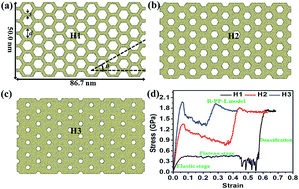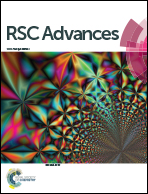Deformation and failure mechanisms of nanoscale cellular structures of metallic glasses
Abstract
Cellular metallic glasses (MGs) can be good candidates for structural and functional applications due to their light weight, enhanced ductility and excellent energy absorption performance. Motivated by the size-dependent mechanical properties of MGs, we perform molecular dynamics simulations of uniaxial compression testing on MGs with nanoscale cellular structures, focusing on the influence of cell size, shape, pattern, and ratio of the cell size to the spacing on the deformation behaviors. With increasing cell size, a clear transition in failure mode from localized plastic deformation to homogeneous plastic deformation is observed. Furthermore, we show that MGs with circular cellular structures exhibit higher strength and energy absorption capacity than those with hexagonal cellular structures due to the reduction of the stress concentration in the honeycomb's joints, in agreement with recent experimental studies. Finally, with decreasing the cell size to spacing ratio, shear band (SB) formation is observed when the shortest distance between the neighbouring cells in the diagonal direction reaches a value comparable to the SB thickness. Our present results not only provide an in-depth atomic understanding of the deformation and failure mechanisms of MGs with nanoscale cellular structures, but also propose an effective way to attain optimized material properties through controlling the cell features.


 Please wait while we load your content...
Please wait while we load your content...